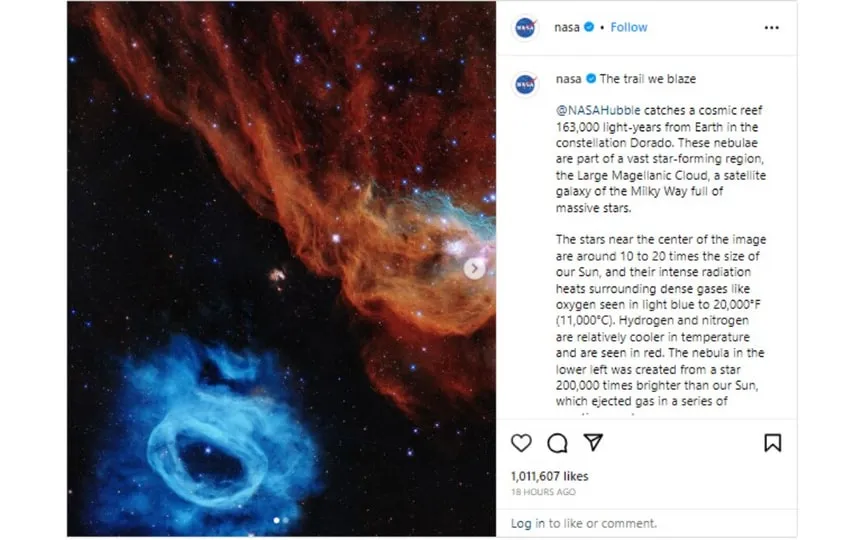Stunning Images of Celestial Reef Discovered by NASA Hubble Telescope
Once again, NASA has captivated the world with its stunning photographs showcasing the wonders of outer space. The renowned NASA Hubble space telescope has gained recognition for its exploration and documentation of celestial entities within and beyond our galaxy. Despite its long-standing role as a near space observer, the telescope consistently delivers awe-inspiring images. In a recent revelation, NASA unveiled images of a colossal red nebula (NGC 2014) accompanied by a smaller blue counterpart (NGC 2020), resembling a cosmic reef against the expansive darkness of space. Let us delve into the significance of the Hubble’s latest capture.
New discoveries from NASA’s Hubble Space Telescope
Through its official Instagram account, NASA shared mesmerizing images of two adjacent red nebulae captured by the Hubble Space Telescope. These nebulae are part of a star-forming region located in the Large Magellanic Cloud, also known as the Milky Way’s satellite galaxy. The nebulae are located 163,000 light-years away, which also demonstrates the capabilities of the Hubble telescope. The image is nicknamed “Cosmic Reef” because the mists resemble an underwater world.
According to a NASA report, the stars in the middle of the image are 10-20 times larger than our sun. Their intense radiation is responsible for heating the dense gases in their vicinity. NASA said: “Their intense radiation heats surrounding dense gases such as light blue oxygen to 20,000°F (11,000°C). Hydrogen and nitrogen are relatively cooler in temperature and appear red.
The image shared by NASA can be divided into two parts for easier understanding. NASA’s Instagram post describes it as follows: “A striking blue ring can be seen in the lower left corner that fades softly from different directions and surrounds a small blue dot in the center. A cosmic canvas with red and orange gas flickering and its hues contrast with space. Inside the sea rises a light blue core with several bright white stars on the surface. In the upper right corner, dark blue gas rises from the cosmic void, providing a mesmerizing cosmic view.”
Such images help us realize that there are so many things in the universe that should be explored and understood. Our galaxy is full of mysteries and new technologies are helping to crack them all.




